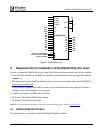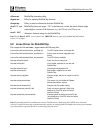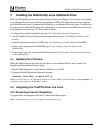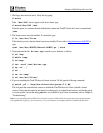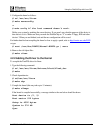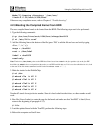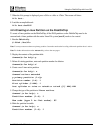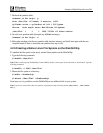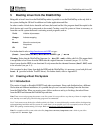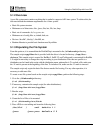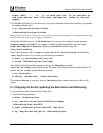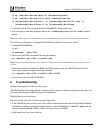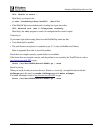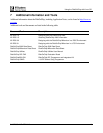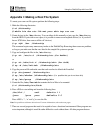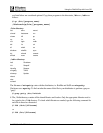
Using the DiskOnChip with Linux OS
91-SR-005-10-7L REV. 2.0 13
5 Booting Linux from the DiskOnChip
Being able to boot Linux from the DiskOnChip makes it possible to use the DiskOnChip as the only disk in
the system, holding the OS itself in addition to all other applications and files.
In order to make a block device bootable on Linux, the kernel and the Lilo program should be copied to the
block device and a root file system needs to be created. Creating a root file system on Linux is necessary, as
from this root file system the kernel is activating several programs, such as:
Init
Initialize all processes
Swapo
n
Activate swapping
Mount
Mount the root and proc
filesystems
Sh
Shell
For further details refer to http://sunsite.unc.edu/LDP/ or type:
#zcat /usr/doc/HOWTO/Bootdisk-HOWTO.gz | more
Warning: Notice that the DiskOnChip firmware (i.e. doc121.exb) collides with Lilo. This means that it
is not possible to load Linux from the HDD after the original firmware is restored (see par. 5.1.4). This
doesn’t mean that the HDD is non-functional. It only means that the alternate firmware (doc2.fff) needs
to be reloaded (see par. 4.1).
If it is required to boot Linux from both the HDD and the DiskOnChip, it is necessary to use both pLilo and
boot.b (provided with the TrueFFS driver). For further details, refer to Appendix II.
5.1 Creating a Root File System
5.1.1 Introduction
This section is based on Bootdisk-HOWTO and other experiments. Since each distribution has a different
file location and different installations, it is possible that you won’t succeed in booting Linux the first time
from the DiskOnChip. When you receive errors, follow each error and try to fix things, but reload Linux
from the HDD and remount the DiskOnChip each time.
Note: There are several programs that create a root file system. It is not possible to say that any of them is complete right
now, but they are worth trying. The following program is recommended:
Yard: Yard creates rescue disks (also called boot disks) for Linux. A rescue disk usually contains utilities for diagnosing
and manipulating hard disks and file systems. It is used when it is not possible (or if it is not required) to boot from your
HDD. This package contains mainly perl scripts. Refer to http://www.croftj.net/~fawcet/yard/.
Note: For a sample root file system, refer to the file /tmp/doc-driver/samplefs.txt which is part of the
compressed file driver.tgz.



